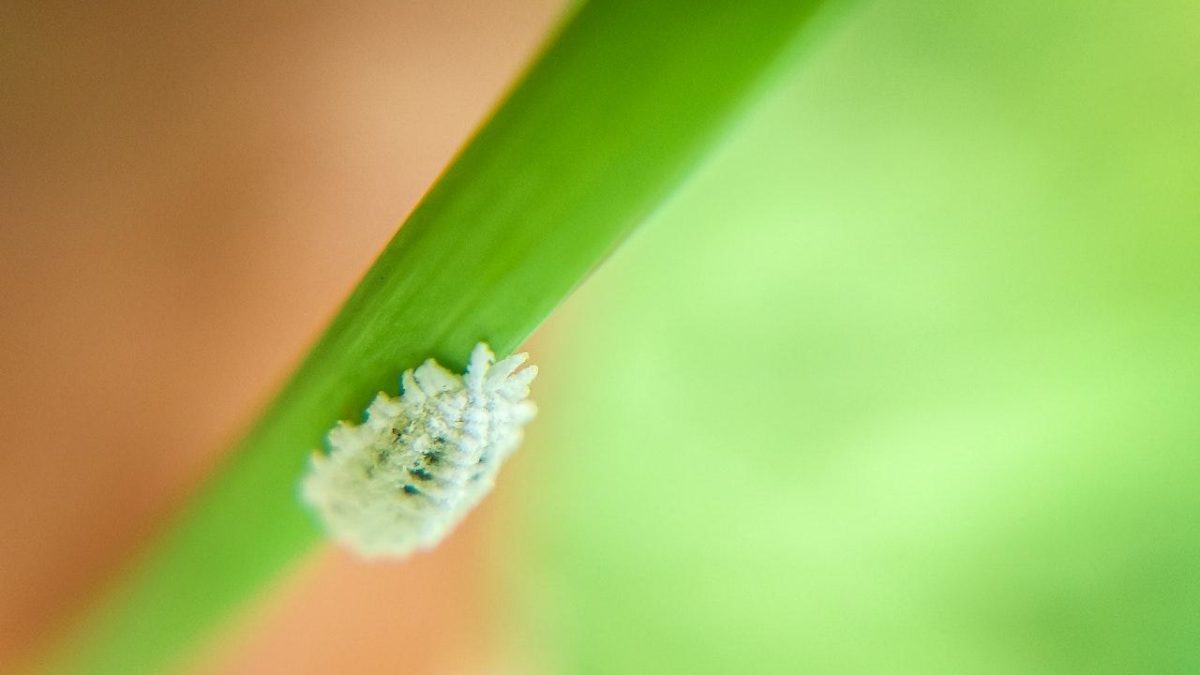Mealybugs are small, soft-bodied insects that feed on the sap of plants. They can be found on both indoor and outdoor plants, but they are particularly common on indoor plants. Mealybugs are usually white and look like small bits of cotton or fluff. They can also have a waxy or yellowish coating.
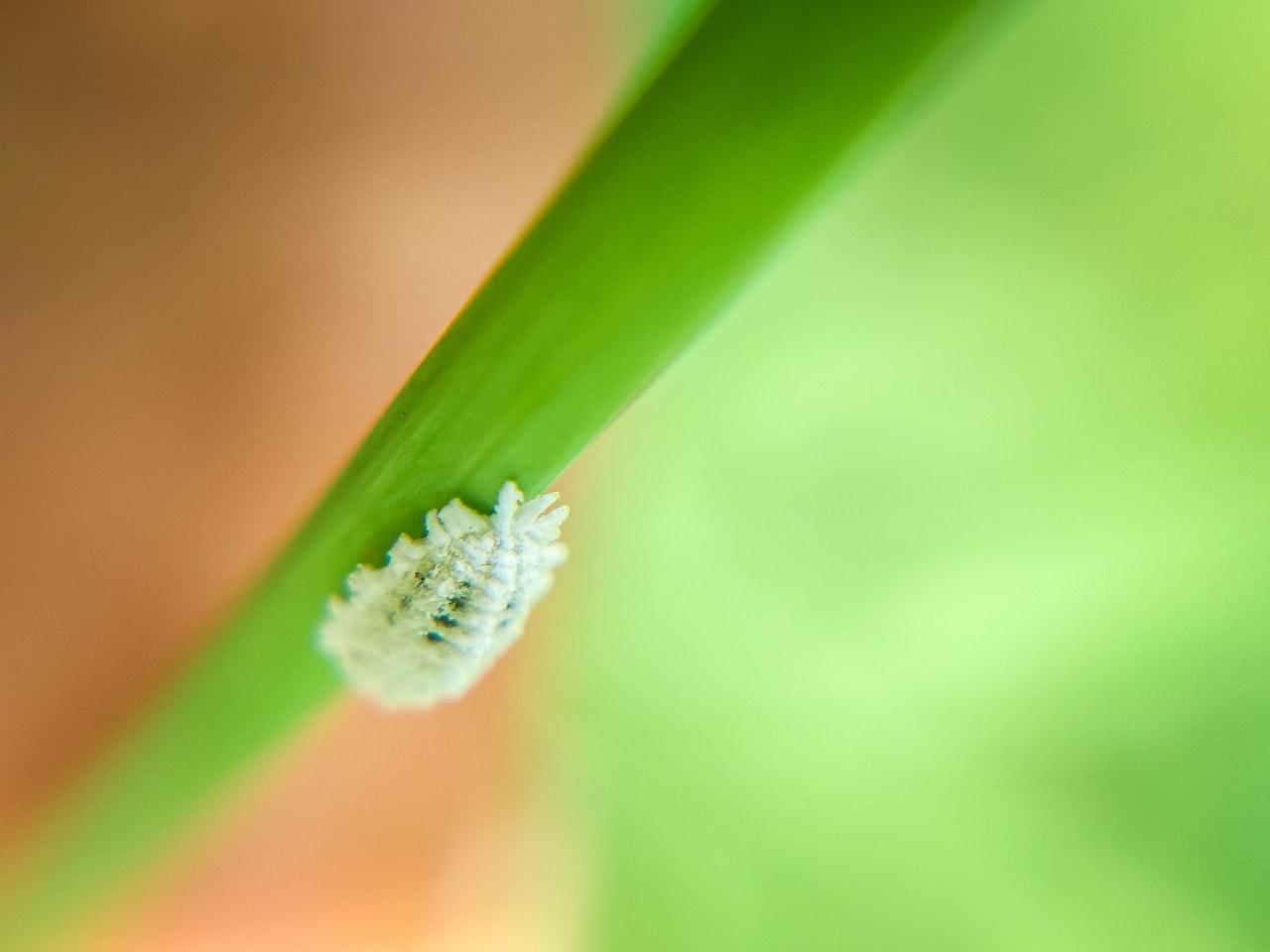
Credit: Pexels
Mealybugs feed on the sap of plants, which can cause significant damage. They can spread quickly and can be difficult to get rid of. To prevent mealybugs from infesting your houseplants, it is important to inspect your plants regularly. Pay special attention to the underside of leaves and stems, as this is where mealybugs like to hide. If you spot any mealybugs, you should remove them immediately.
By regularly inspecting your plants with the tips in this post, keeping them healthy and well-maintained, you can prevent mealybugs from infesting your houseplants.
How To Inspect Your Houseplants For Mealybugs
Inspecting your houseplants for mealybugs is important for preventing a mealybug infestation. Mealybugs are small, white, soft-bodied insects that can cause damage to your plants. They feed on plant sap and can quickly spread to other plants in your home. To prevent a mealybug infestation, you should regularly inspect your houseplants for signs of mealybugs.
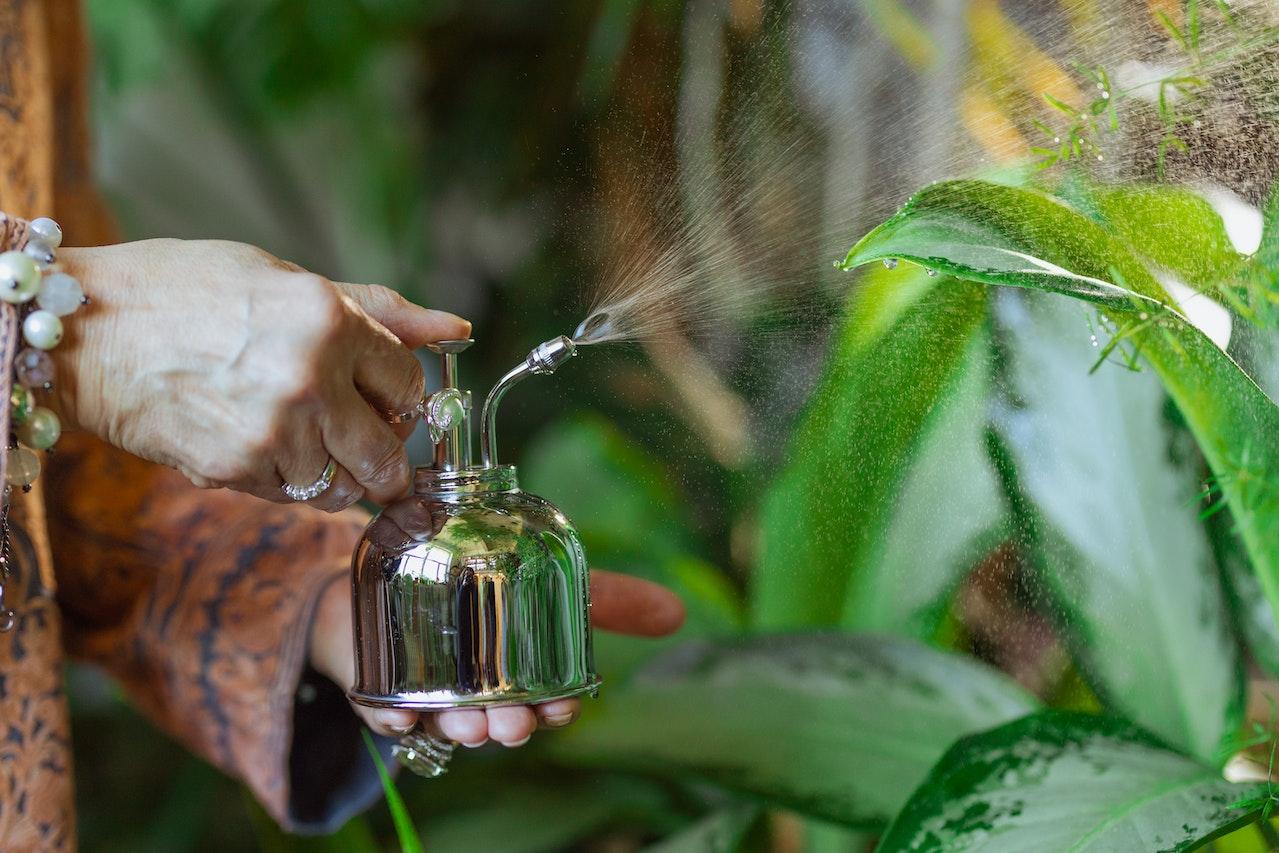
Credit: Pexels
Here are some tips on how to inspect your houseplants for mealybugs.
-
Check the underside of the leaves
Mealybugs often hide in the crevices of leaves, so check the underside of the leaves for signs of mealybugs. Look for small white cottony-looking spots or masses, which are a sign of an infestation.
-
Look for mealybug eggs
Mealybugs lay their eggs on the underside of leaves or in the crevices of stems. Look for small, yellowish-brown eggs that are clustered together.
-
Inspect the stems
Mealybugs can also be found on the stems of plants. Inspect the stems for any signs of mealybugs, such as white cottony masses or eggs.
-
Look for honeydew
Mealybugs excrete a sticky substance called honeydew. If you notice a sticky substance on the leaves or stems of your plants, it could be a sign of a mealybug infestation.
-
Check for ants
Ants are attracted to the honeydew excreted by mealybugs. If you notice ants on your plants, it could be a sign that there is a mealybug infestation.
-
Check for damage
Mealybugs can cause damage to plants by sucking the sap from the stems and leaves. Look for signs of damage, such as discolored or wilted leaves, or stunted growth.
-
Look for sooty mold
Mealybugs excrete honeydew, which can lead to the growth of sooty mold on the leaves of your plants. Sooty mold appears as a black, powdery substance on the leaves.
-
Check your plants regularly
Regularly inspect your plants for signs of mealybugs, as they can quickly spread to other plants in your home.
-
Isolate infested plants
If you find signs of mealybugs on one of your plants, isolate it from the other plants. This will help prevent the mealybugs from spreading to other plants.
The Benefits Of Preventing Mealybugs
Here are some of the benefits of preventing mealybugs:
-
Healthier Plants
The first benefit of preventing mealybugs is that your plants will stay healthier overall. Mealybugs feed on the sap of plants, which can lead to wilting, yellowing, and even death. By taking preventative measures, you can ensure that your plants stay healthy and thrive.
-
Less Stress
Another benefit of preventing mealybugs is that you will experience less stress. When plants are infested with mealybugs, it can be difficult to control the spread and the resulting damage. Taking preventative measures can help you avoid this situation and save you a lot of time and effort.
-
Boost Aesthetics
Plants provide a natural and beautiful element to any home, and mealybugs can quickly ruin that look. By taking steps to prevent mealybugs, you can ensure that your plants remain beautiful.
-
Help the Environment
Mealybugs can spread quickly and cause significant damage to plants, which can have a negative impact on the environment. Taking steps to prevent mealybugs can help to reduce this damage and protect the environment.
The Best Ways To Dispose Of Mealybugs
Fortunately, there are several effective ways to get rid of mealybugs.
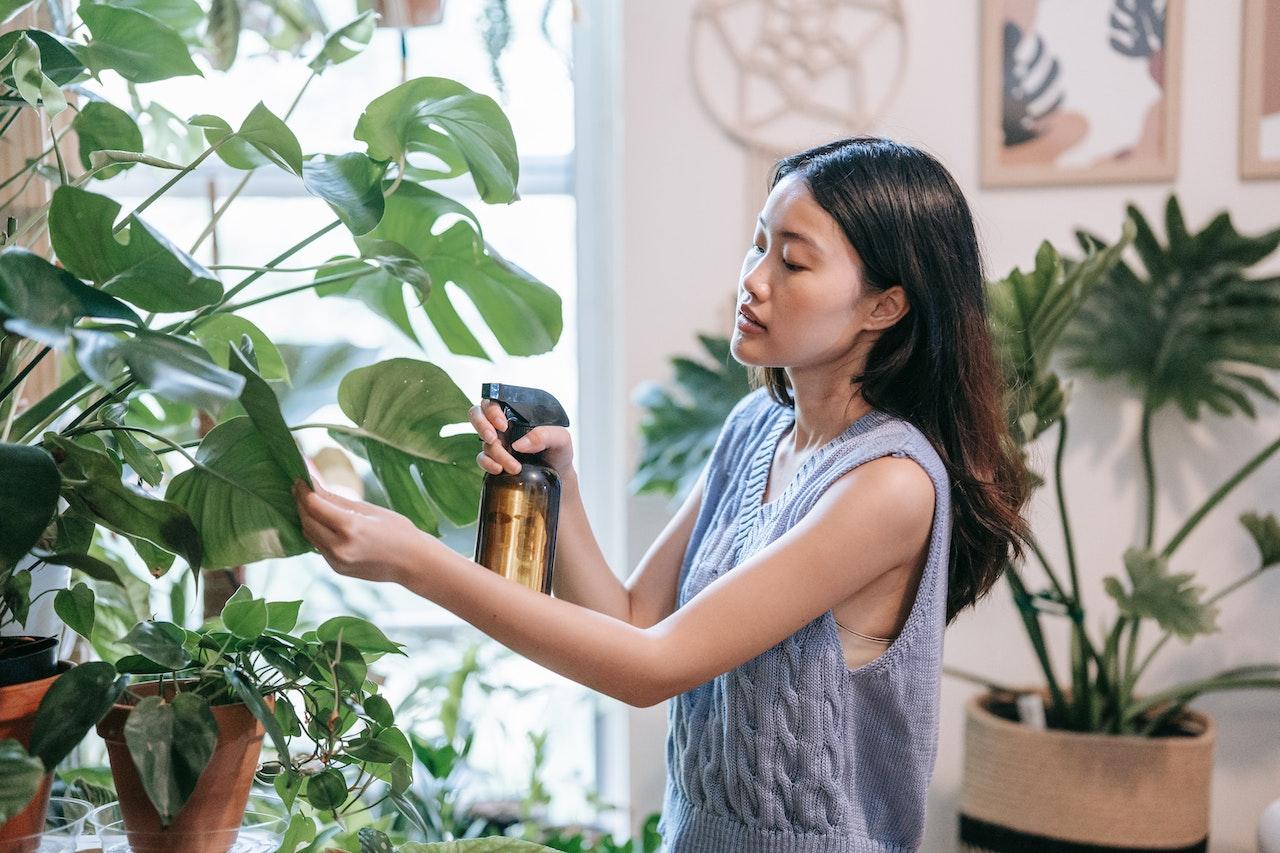
Credit: Pexels
Here are the best ways to dispose of mealybugs and keep them from coming back.
1. Isolate Affected Plants
The first step in controlling mealybugs is to isolate any affected plants. This will help prevent the mealybugs from spreading to other plants in your home. If you have multiple plants with mealybugs, it’s best to move them to a different room or area of the house.
2. Prune Off Affected Leaves and Stems
If you notice mealybugs on your plants, you should immediately prune off any affected leaves and stems. This will help stop the spread of the mealybugs and help keep your other plants healthy.
3. Use Insecticidal Soap
Insecticidal soap is a great way to get rid of mealybugs. This soap is specifically designed to kill mealybugs and other insects. All you have to do is mix the insecticidal soap with water and spray it onto the affected plants.
4. Use Neem Oil
Neem oil is another effective way to get rid of mealybugs. This oil is derived from the neem tree and is a natural insecticide. All you have to do is mix the neem oil with water and spray it onto your plants. It’s best to apply the neem oil in the evening, as direct sunlight can cause it to burn the leaves of your plants.
5. Use Horticultural Oils
Horticultural oils such as neem oil and mineral oil are also effective against mealybugs. All you have to do is mix the horticultural oil with water and spray it onto your plants. This will help get rid of the mealybugs and help keep them from coming back.
6. Introduce Natural Predators
Introducing natural predators such as ladybugs and predatory mites is another great way to get rid of mealybugs. These predators will help control the mealybug population and help keep them from coming back.
7. Vacuum The Bugs
Vacuuming the mealybugs off your plants is another effective way to get rid of them. All you have to do is use a handheld vacuum to suck up the mealybugs. This will help get rid of the mealybugs and help keep them from coming back.
8. Dispose of Infested Plants
In some cases, the best way to get rid of mealybugs is to simply dispose of the infested plants. This will help prevent the mealybugs from spreading to other plants in your home.
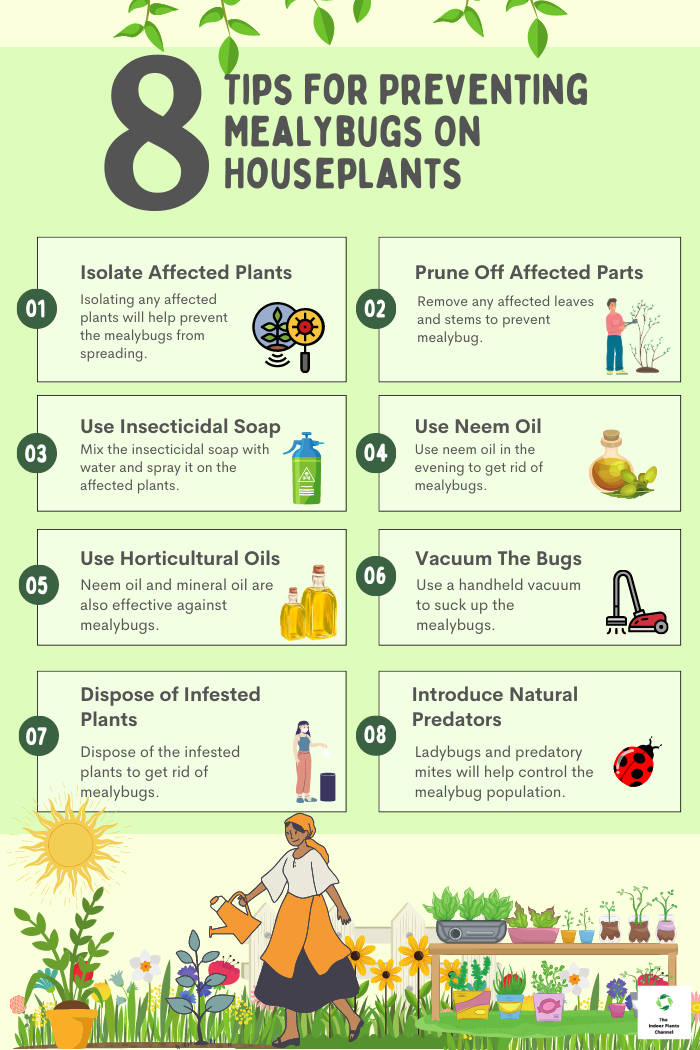
The Best Ways To Monitor Your Houseplants For Mealybugs
Here are the best ways to monitor your houseplants for mealybugs.
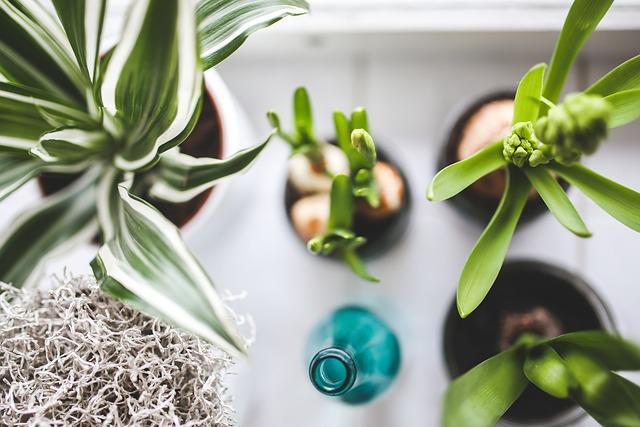
1. Regularly Inspect Your Houseplants
One of the best ways to monitor your houseplants for mealybugs is to regularly inspect them. Take the time to look for any signs of mealybugs, such as white, cottony masses, or small, yellowish spots. If you find any, then you can take steps to remove them before they spread further.
2. Use Yellow Sticky Traps
Yellow sticky traps are great for monitoring mealybugs. These traps are brightly colored and attract the bugs, which then get stuck on the adhesive. This is a great way to monitor the number of mealybugs in your home and to get an idea of how quickly they are multiplying.
3. Set Up a Cleaning Routine
Keeping your houseplants clean is one of the best ways to prevent mealybugs. Make sure to regularly clean the leaves and stems of your houseplants with a damp cloth or sponge. This will help to remove any mealybugs that have already found their way onto your plants.
4. Use Natural Predators
There are some natural predators that can help to control the population of mealybugs. Ladybugs, for example, are known for their ability to eat mealybugs. If you can introduce some of these predators into your home, then they can help to keep the mealybug population in check.
5. Prune Affected Leaves
If you notice any leaves on your houseplant that have mealybugs, then you should prune them off. This will help to reduce the number of mealybugs on your plant and will also help to prevent them from spreading to other plants.
6. Use Insecticidal Soaps
Insecticidal soaps are a great way to get rid of mealybugs. These soaps contain natural ingredients that will kill the mealybugs without harming your plants. Be sure to follow the instructions on the label and make sure to apply the soap to the underside of the leaves, where the mealybugs are likely to hide.
7. Introduce Beneficial Nematodes
Beneficial nematodes are microscopic worms that feed on mealybugs. Introducing them into your soil can help to reduce the population of mealybugs on your plants.
8. Use Chemical Insecticides
If all else fails, then you may need to use chemical insecticides. These products are available from garden centers and should be used as a last resort. Be sure to follow the instructions on the label and take proper precautions when using them.
Bonus Tips
- Inspect plants regularly for signs of mealybugs.
- Isolate new plants for a few weeks before adding them to your collection.
- Keep plants healthy with proper lighting, water, and fertilizer.
- Prune and discard any infested leaves or stems.
- Spray the plant with an insecticidal soap or neem oil solution.
Frequently Asked Questions
- What Are Mealybugs?
Mealybugs are small, white, fuzzy, pest insects that feed on houseplants. They feed on the sap of the plant and can cause a great deal of damage. They are most commonly found on the stems and leaves of houseplants, but can also be found on the roots and even in the soil.
- How Can I Identify Mealybugs?
Mealybugs can be identified by their white, fuzzy appearance. They are typically about 1/10 of an inch long and have a waxy coating. They may also have a gray, brown, or yellowish tint.
- What Damage Can Mealybugs Cause?
Mealybugs can cause a great deal of damage to your houseplants. They feed on the sap of the plant, which can cause the leaves to turn yellow and the plant to become stunted. Mealybugs can also spread diseases to other plants.
- What Are Some Signs of Mealybug Infestation?
Signs of mealybug infestation include yellowing leaves, stunted growth, and sticky residue on the leaves or stems. If you see any of these signs, you should inspect your plants for mealybugs.
- Are There Any Natural Ways to Get Rid of Mealybugs?
Yes, there are several natural ways to get rid of mealybugs. You can spray your plants with a mixture of dish soap and water, or use an insecticidal soap or neem oil. You can also use a cotton swab dipped in rubbing alcohol to remove individual mealybugs.
- How Can I Keep Mealybugs From Coming Back?
The best way to keep mealybugs from coming back is to practice good houseplant care. Make sure to keep your plants well-watered and fertilized, and inspect your plants regularly for signs of infestation.
Also, make sure to quarantine any new plants before adding them to your home to prevent the spread of mealybugs.
Conclusion
By following these 10 simple tips, you can greatly reduce the risk of mealybugs finding their way onto your houseplants and infesting them. Taking the time to properly care for your houseplants will not only keep them healthy, but it will also keep your home free of these pests.
Michelle Wilde
Related posts
![]()
About Michelle Wilde
Michelle Wilde is a stay-at-home mom and avid plant lover. Armed with a post-graduate degree in Computer Science (no kidding!), she loves researching plants and landscapes. When she is not caring for her 4 kids, she spends time on her passion for plants. She blogs at www.indoorplantschannel.com, the trusted source for indoor plants.
Learn more
Subscribe
* You will receive the latest posts and updates about indoor plants!
Search
Recent Posts
Categories
- Beginner Guides (10)
- FAQ (206)
- General (2)
- How-To Guides (212)
- Indoor Plants (214)
- Pest Management (2)
- Plant Problem Solutions (4)
- Seasonal Growing (2)
- Specialized Environments (2)
- Specific Plant Care (3)
- Technical Growing (2)
